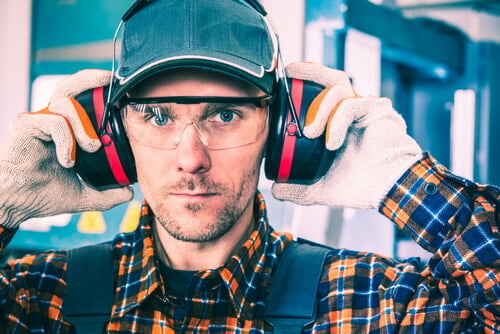Personal Protective Equipment

The Sound of Safety: Importance of Hearing Protection
Introduction:
Our sense of hearing is invaluable, enabling us to experience and interact with the world. However, exposure to excessive noise levels can lead to permanent hearing loss and other auditory issues. Whether at work or during leisure activities, it is crucial to prioritize hearing protection to safeguard our hearing health. This article highlights the importance of hearing protection and provides valuable tips for selecting and using appropriate hearing protection devices.Understanding the Risks: Exposure to loud noises, whether intermittent or prolonged, can cause irreversible damage to our hearing. Familiar sources of excessive noise include construction sites, industrial machinery, power tools, concerts, sporting events, and even personal music devices played at high volumes. Recognizing the risks and taking proactive steps to protect our hearing is essential.
Choosing the Right Hearing Protection:
-
Noise Assessment:
Conduct a noise assessment to identify potential environmental hazards. Measure noise levels using a sound level meter or consult workplace safety guidelines. This will help determine the appropriate level of hearing protection needed.
-
Earplugs:
Earplugs are small, portable, and effective at reducing noise levels. They come in different shapes, sizes, and materials. Foam earplugs are affordable and moldable to fit the ear canal. Silicone or rubber earplugs are reusable and provide a more customized fit. Select comfortable earplugs that offer a good noise reduction rating (NRR) and suit your specific needs.
-
Earmuffs:
Earmuffs cover the outer ear and create a seal to reduce noise. They are effective in high-noise environments and offer a higher NRR than earplugs. Look for earmuffs with adjustable headbands and cushioned ear cups for a secure and comfortable fit.
-
Custom-Fitted Protection:
Custom-fitted hearing protection may be recommended for individuals regularly exposed to high noise levels. These devices are molded to the individual’s ear shape, providing maximum comfort and effectiveness.
Using Hearing Protection Properly:
-
Correct Insertion:
Ensure proper insertion of earplugs or earmuffs. For earplugs, roll them between your fingers, gently insert them into the ear canal, and hold them in place until they expand fully. For earmuffs, ensure a snug fit by adjusting the headband and positioning the ear cups securely over the ears.
-
Follow Manufacturer Guidelines:
Read and follow the manufacturer’s instructions for the specific hearing protection device you are using. Pay attention to any usage limitations, cleaning recommendations, and expected lifespan of the device.
-
Consistent Use:
Wear hearing protection consistently in noisy environments, even for short durations. Cumulative exposure to loud noises can lead to hearing damage over time. Make hearing protection a habit and encourage others in your environment to do the same.
-
Communication Considerations:
Understand that hearing protection can reduce the clarity of sounds and limit communication. Explore options such as earmuffs with integrated communication capabilities or specialized earplugs that attenuate harmful noise while allowing for clear communication.
-
Regular Cleaning:
Keep your hearing protection devices clean and free from debris or earwax buildup. Follow the manufacturer’s recommendations for cleaning or replacing parts.
-
Inspection:
Regularly inspect your hearing protection for any signs of damage, such as cracks, tears, or degradation. Damaged devices may compromise their effectiveness and require replacement.
-
Replacement Schedule:
Replace earplugs or earmuffs according to the manufacturer’s guidelines or when they no longer provide a proper fit or sufficient protection. Over time, the effectiveness of hearing protection devices can diminish.
Maintaining and Replacing Hearing Protection:
Conclusion:
Preserving our hearing health is a lifelong commitment, and hearing protection plays a vital role in achieving this goal.